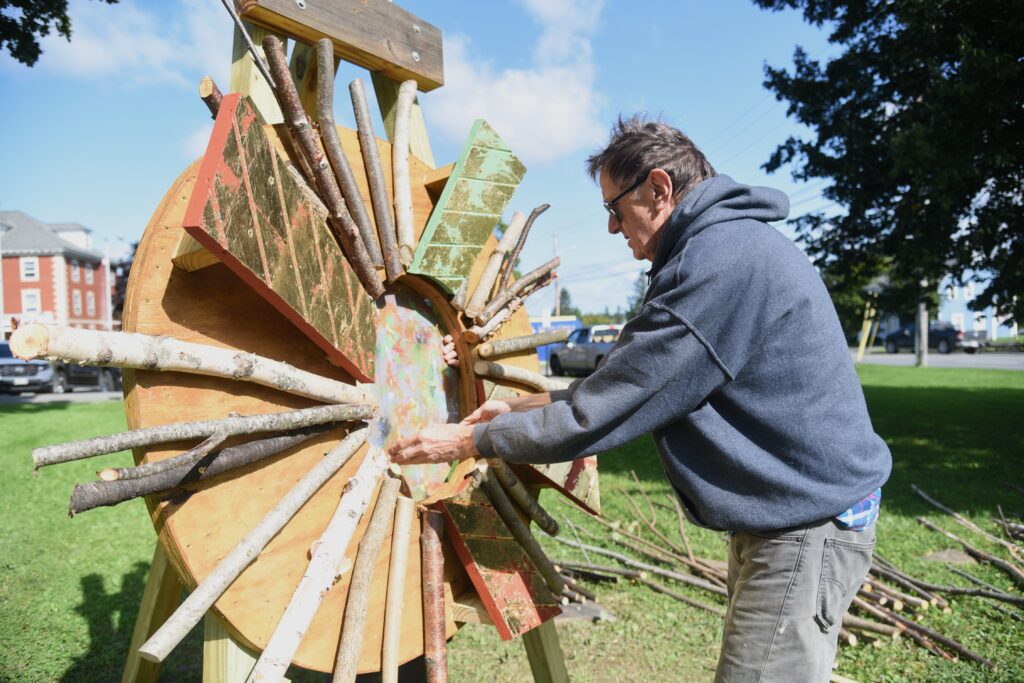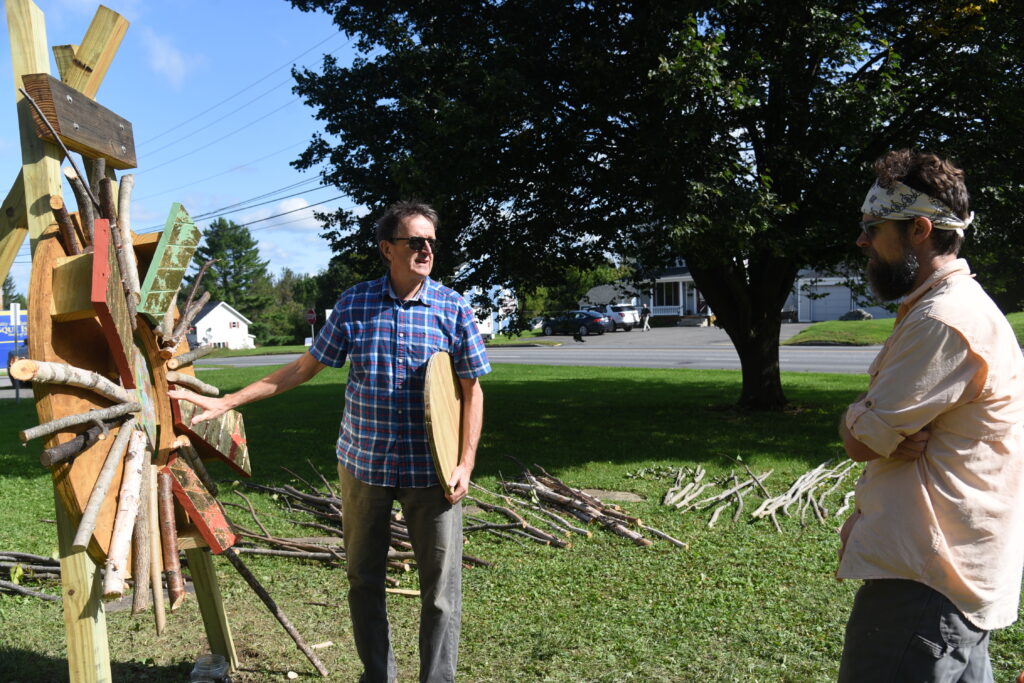
PRESQUE ISLE, Maine — A multimedia artist from Georgia with family roots in Houlton is creating an installation of three wooden sculptures in Presque Isle and Houlton as part of a national trail of art.
The works are part of a group of six installations by Henry Dean to be set up across America tracing the line of the 2024 solar eclipse event. They are collectively titled “Now and then.”
Each installation will be unique in its celebration of the specific area’s natural environment by using locally sourced wood for the sculptures. The Presque Isle sculpture has four different wood types including birch and spruce harvested from Chapman. The artwork, set up on a tripod, is a circular shape with a central hole to let the sunlight through it.

The sculpture in Presque Isle is the first commissioned work Dean has done in Maine. The University of Maine at Presque Isle purchased it.
“I am manifesting my belief in the unifying power of nature, but also the idea of education, science and art being one,” said Dean, a multimedia artist and professor of foundation studies at The Savannah College of Art and Design.
Dean describes his artwork as an expression of his immersion in, and responses to, nature and humanity. One such connection occurred on Aug. 30 when the rain poured onto the sculpture as it sat outside of the UMPI’s South Hall.

Dean’s work celebrates the cosmos and acknowledges that nobody owns a cosmological experience like an eclipse event. The sculpture installations are nodes people can visit to take photos and record their experiences.
“There are constituencies and there are unifying forces, one of which is the path of the shadow,” Dean said.
U.S. Route 1, just 8 miles north of Houlton, will be in the centerline of the eclipse’s umbra, which means the whole shadow of the eclipse will cover that area, while Presque Isle will see the edge of the April 2024 eclipse. The eclipse will last three minutes, Dean said.
After Dean is finished with the Presque Isle sculpture, he will set up the second part of the Maine display in Houlton, counting the two locations together as one installation of the six spread across the country.
Chief Clarissa Sabattis of the Houlton Band of Maliseet Indians gave Dean permission to install two sculptures, one each on the opposing banks of the Lowery Road Bridge over Smith Brook along the Meduxnekeag River, when she met him in the spring. The river is on the Maliseet’s reservation.

Dean’s grandfather built a fishing cabin on Meduxnekeag Lake. When he was a child, he would come from New York to visit his grandfather and make drawings and paintings on the lake, he said. His family — the Putnams — were one of the town’s original families.
“There’s a very experimental quality to my work like I am putting my work out in the environment,” Dean said. “I feel that my pieces are almost like they’re receptors where they are receiving the experience of being.”
The designs change as he works on the installations, which is natural to him as an artist. He is always thinking about the design of his next piece.
His next installation will be in Bloomington, Indiana.
Other installations will be located in Cape Girardeau, Missouri, Vincennes, Indiana and Indianapolis, Indiana. The final installation will be in Del Rio, Texas.

One of his former students from The Savannah College of Art and Design, Justin Kuhn, who lives in Asheville, North Carolina, is helping Dean with the sculptures.
In 2017, Dean did a pop-up video installation with two sculptures for the eclipse that happened on Aug. 21 titled Crescent Sun (The Moon and Her Sisters) in Elloree, South Carolina.
“The eclipse, to me what it’s saying is the cosmos is connecting us,” Dean said.
Correction: An earlier version of this story had the incorrect name for the Lowery Road Bridge over Smith Brook.






